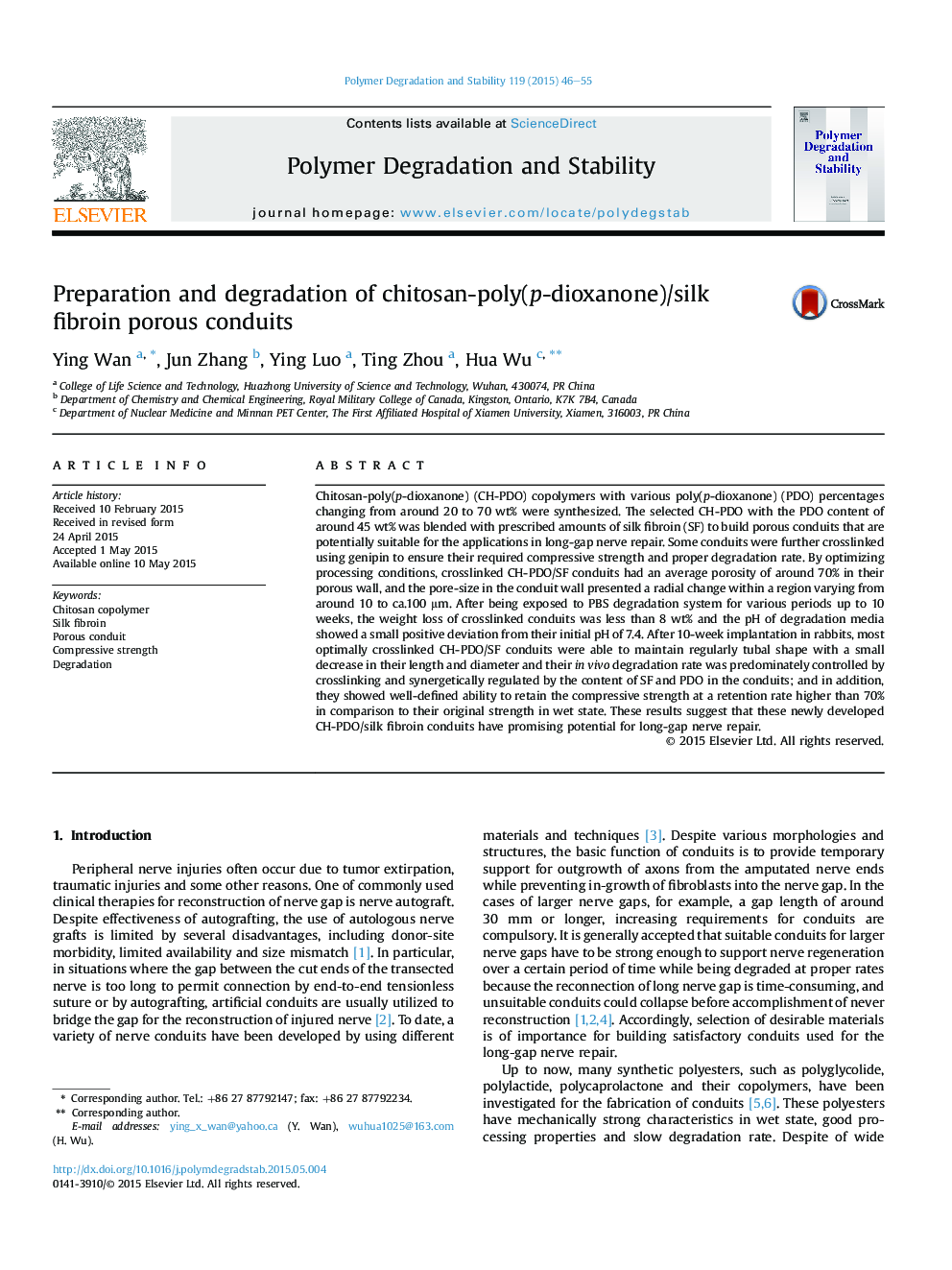| Article ID | Journal | Published Year | Pages | File Type |
|---|---|---|---|---|
| 5201436 | Polymer Degradation and Stability | 2015 | 10 Pages |
Chitosan-poly(p-dioxanone) (CH-PDO) copolymers with various poly(p-dioxanone) (PDO) percentages changing from around 20 to 70 wt% were synthesized. The selected CH-PDO with the PDO content of around 45 wt% was blended with prescribed amounts of silk fibroin (SF) to build porous conduits that are potentially suitable for the applications in long-gap nerve repair. Some conduits were further crosslinked using genipin to ensure their required compressive strength and proper degradation rate. By optimizing processing conditions, crosslinked CH-PDO/SF conduits had an average porosity of around 70% in their porous wall, and the pore-size in the conduit wall presented a radial change within a region varying from around 10 to ca.100 μm. After being exposed to PBS degradation system for various periods up to 10 weeks, the weight loss of crosslinked conduits was less than 8 wt% and the pH of degradation media showed a small positive deviation from their initial pH of 7.4. After 10-week implantation in rabbits, most optimally crosslinked CH-PDO/SF conduits were able to maintain regularly tubal shape with a small decrease in their length and diameter and their in vivo degradation rate was predominately controlled by crosslinking and synergetically regulated by the content of SF and PDO in the conduits; and in addition, they showed well-defined ability to retain the compressive strength at a retention rate higher than 70% in comparison to their original strength in wet state. These results suggest that these newly developed CH-PDO/silk fibroin conduits have promising potential for long-gap nerve repair.
